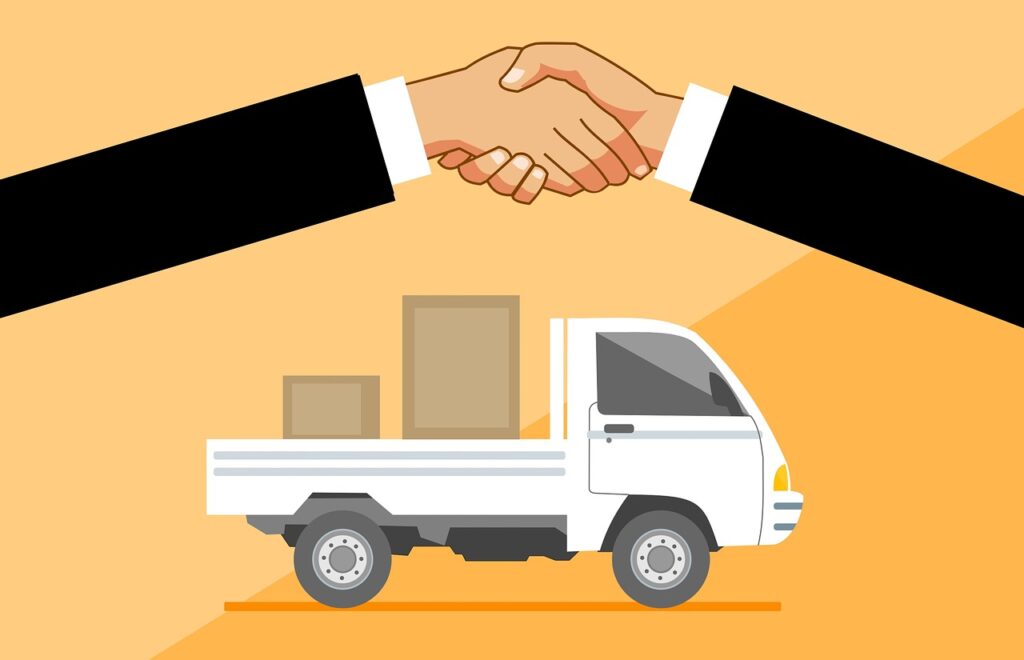How to start Dropshipping business in 2023?
Dropshipping is one of the most popular online business model in the recent years. The latest data suggests that the global dropshipping market is forecasted to reach USD 243 Billion (INR 20 lakh Cr) in Y2023. Further, this figure is only going to increase and projected to reach USD 300 Billion (INR 25 lakh Cr) in Y2024 and USD 372 Billion (INR 30 lakh Cr) in Y2025. So you can imagine the potential of this business. The major factor contributing to this growth is the consumers shift towards online shopping from brick-and-mortar stores. Dropshipping business is very easy to start and very less investment is required. In the article, you will get all the information dropshipping business like pros & cons, investment required, profit margins and detailed guide on how to start this business. Now, lets jump into the details and see how to start dropshipping business in 2023.
What is Dropshipping?
It is mainly a trading business means you need to buy some product from a supplier at say Rs. 100 and sell it to customer at say Rs. 110. So, Rs. 10 will be your profit. Historically, we have been doing this business and we call it wholesale or retail business. In wholesale business, you buy goods from a supplier, keep it in your warehouse or store and finally sell / ship based on customer demand, choice and requirement. Customer may not buy everything that you have in your store. This leads to pile of inventory that would be slow moving or with no demand, which is huge cost to the business. Now, dropshipping business offers an incredible solution to this problem.
In this business model, you neither need to store any inventory nor there is any requirement to ship to the customer. Customer will order online through your website or online marketplace and the order details goes to the respective supplier automatically. Supplier will then directly ship the goods to the customer. Isn’t this great ??? I hope you are already excited to learn more about this business model but lets see first what are the pros and cons of this business model.

Pros & Cons of Dropshipping business
Pros of Dropshipping business
- Very easy to start
This is the best part about dropshipping business. You dont need to worry warehousing & storage of products, packaging and shipping to customer. So you can start this business easily evenif you have no experience in these functions, which makes it very easy to start this business.
- Less investment required
No warehouse, storage and shipping means no rent, no inventory cost and no shipping cost. These are the only major expenses in a trading business. If you take out this expense, you don’t need huge amount of working capital. You just need a laptop and a good internet connection to start with.
- No location barrier
As there is no requirement of any office or warehouse, you can literally start this business from anywhere may it be your hometown, a village or from a beach in Goa 😉
- Scalable business with huge demand and scope for expansion
Since it is an online business, the market is huge. Anyone from anywhere can place an order from your website. Further, you can add as many products in your portfolio as you want. So you are not restricted to any location or any product range.
Cons of Dropshipping business
Although there are many good things about this business but like any other business there are also many challenges in this business as well. Lets have a look..
- This business ain’t simple!!
Supplier issues, Customer support, quality issues and order returns are some of issues that you need to deal with on day to day basis. Further, you also need to maintain your website and attract online traffic.
- Highly competitive and Low margins
Since this business does not need high investment, obviously there are many people who would be interested to start this business which makes it highly competitive business. Due to high competition, the margins are quite low in this business. Also there is no scope of optimization and cost cutting on expenses like rental and shipping cost since you are not managing these costs.
- No control on supply chain
As you cannot store the inventory at your warehouse, you are highly dependent on the supplier. If supplier refuses to support the orders due to shortage of inventory, you will struggle finding another supplier and may also lose the order and ultimately brand reputation.

Investment required, working capital & profit margin
Investment required for starting dropshipping business
This actually depends on how you want to start your business. If you want to start your own online store, the cost would be bit high compared to if you list your business of websites like Shopify, Amazon, etc. I would recommend to start your own website and independent online store.
| Type | Amount Rs |
|---|---|
| Website & hosting | 10,000 |
| Laptop | 60,000 |
| Legal registrations | 10,000 |
| Total | 80,000 |
Working capital for dropshipping business
Since you dont need to hold any inventory, there is no requirement of working capital at an initial stage. However, as your business grows, you may need to hire people and rent out a small office. So for that purpose, you may need around INR 100,000 to cover your 2-3 months of expenses.
Product economics (cost breakup of 1 sample product)
As I mentioned earlier, the margins in this business would be quite low because this is mainly a high volume game.
| Item A | Amount Rs |
| Selling price | 100 |
| Cost price | 90 |
| Gross profit | 10 |
| Overheads | 5 |
| Net profit | 5 |

Steps to start your own Dropshipping business
1. Conduct product research and decide your product category
The first step to start your dropshipping business would be conduct a thorough product research and study the competition. This is where you need to spend a lot of time because if you select a product category, there are high chances of failure. There are millions of products out there but you need to decide your niche based on many factors. You need to ask these questions to yourself.
What are my interests? Make a list of it.
Whether this product category has a demand? Rate them out of 10
What is the level of competition? High competition means low chance of success.
Finally, zero in the product category based on your research.
You can use some tools to do your research like Google trends, Spotify’s list of trending products, Amazon/Flipkart bestsellers list, etc.
Some examples includes
Electronics & Accessories (mobile/laptop cover, chargers, drones)
Fashion, apparels (Shapewear, bags, Slip-on shoes)
Nutrition & fitness (Protein bar, multivitamins, bicycle, yoga mat)
Home furniture & kitchen (Air purifier, chairs, microwave)
2. Create your brand name
Secondly, create a brand name which should be catchy and simple. Then you should create your logo and tagline. You can easily create a logo for free using various websites for example, www.canva.com
Before, finalizing the brand name, check whether the domain is available or not.
3. Register your business and obtain required licenses
You need to obtain below basic licenses in order to start your business
- Udyam registration http://udyamregistration.gov.in/
- GST (Goods and Service Tax) registration https://reg.gst.gov.in/registration/
- Company registration like private limited company, partnership or proprietorship firm. I would recommend starting with a proprietorship firm first, then when your business grows you may get into a private limited company.
- PAN card (if it’s a private limited company or partnership, not required if you are starting as a proprietor).
Also open a separate current bank account if it’s a private limited company or partnership, not required if you are starting as a proprietor.
You can obtain these licenses directly if you have required knowledge. However, I would recommend taking help from a CA or lawyer.
4. Select E-commerce platform
Next step would be choose the e-commerce platform. There are many platforms in the market but I would recommend Shopify because it has a wide network and cheaper plans for beginners. The basic plan starts from Rs 1,499 per month wherein you will get access to basic reports, 1000 inventory locations and 2 staff accounts.
Other platforms includes Baapstore, Wholesale box, Trade India and HotHaat. You may visit their websites and see their platforms, pricing plans and the process to register your business and products on their platforms.
Be careful while listing your products on Amazon and Flipkart because they have high commission charges and strict delivery deadlines.
5. Source products from suppliers
Once you are listed on Shopify or any other platform, they can easily select the suppliers from these platforms. Before selecting the suppliers, please read the commercials and terms & conditions about the product cost price, delivery timelines, SLA, penalty clause, etc.
There is a platform called “DSers” which connects store owners with millions of products to choose from. You can search the entire catalog by item, category, vendor, location, or by sales volume.
Some marketplaces charge monthly or per-transaction fees to access their platform. However, most of them offer a free starter plan to help you start your business without any upfront costs.
Once your volume scales and your business develops, higher profit margins can be achieved by sourcing your own dropshipping partners directly.
6. Build your website
Building your own website is crucial when you scale up and want to create a brand name. It would be great if you have your own website to market your products on other social media platforms like instagram, facebook, twitter, etc.
7. Marketing
Last but not the least would be marketing your products on all the social media platforms and SEO optimization. Marketing is very important in these kind of online business.

Conclusion
Summing up, this is all you need to start your dropshipping busisess. This model can be very profitable if you invest your time and energy into finding the right suppliers and maximizing your margins. It is more complicated than the traditional sales model but it definitely comes with its own unique set of benefits that makes it a great choice for startups and small business owners. Stick with quality items to grow your business and market your brand/ products wisely.
I hope you enjoyed this post and have learnt something out of it that would help you in building your cloud kitchen. If you think I missed out any point and you have any confusion, feel free to share your comments.




